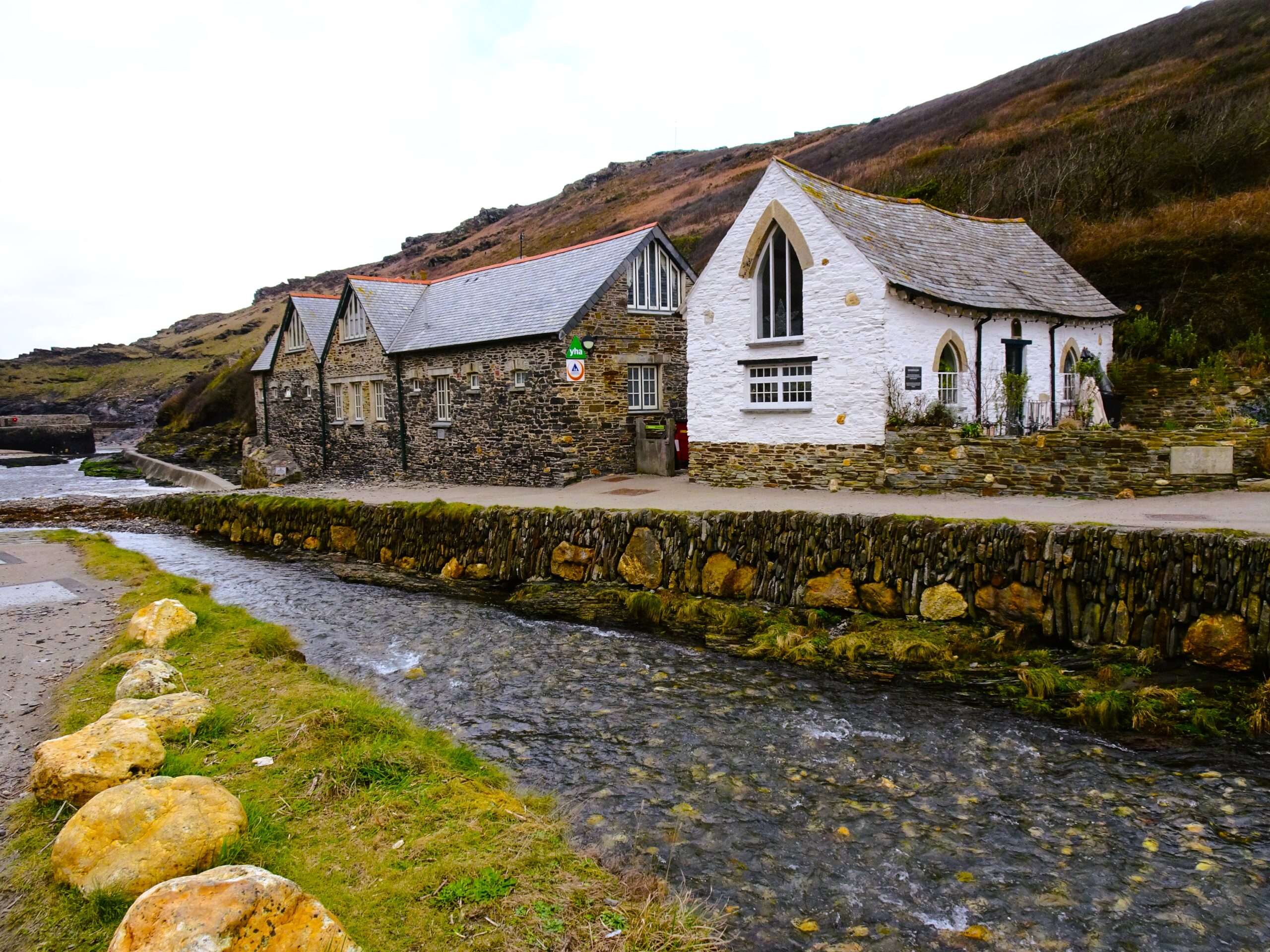My attention was piqued. A pottery shop, and selling crystals, too. We had stayed in Boscastle a long time ago, but I couldn’t recall seeing it, which surprises me, as I’m a great lover of handmade pots and was a keen ceramicist back then.
“Have you been here very long?” I said in response to the warm welcome offered by the potter busy decorating a vase before its first kiln firing.
“Well, the shop’s been here for centuries, and I’ve been a potter here for the last sixty years,” he replied, gazing up again from the vase, where he was forming a tiny mouse and fixing it to the side. After so much experience, it’s no wonder the objects on sale are so impressive. Traditional items such as plates, bowls, mugs, and all sorts of innovative items line the shelves. All gorgeous, but to me, the delicately painted trees and engine house designs are the most appealing.
After storing our purchases safely in the car, we carried on walking around the fishing port where, apart from a few larger buildings such as The Wellington Hotel and The Cobweb Inn, the majority are compact and quaint.
The latter tavern sits next to the pottery, a tall premises that started its history over three hundred years ago when it was a shipping warehouse. Since then, it has been used for different businesses until it became a public house in 1947 and still is today.
We stayed on the main footpath down to the waterside, making a mental note of the South West Coast Pathway tracking the cliffs on either side of the River Valency for a future visit. It flows swiftly under bridges and by small independent outlets, as well as the National Trust shop and café, as it journeys towards the Medieval harbour.
Nearby is the Museum of Witchcraft and Magic. Disappointingly it is closed, but I expect it will open again come spring and Easter. From the outside, it looks mysterious, and friends tell me it’s fascinating. It’s certainly charming, but an unexpected venue for a coastal area.
Looking out from the quayside wall was invigorating with a blustery breeze and whooshing waves below. Encouraged by nature’s energy, over rocks, the water rushed into a cave and spouted out again. The blow-hole is known as the Devil’s Bellows and best at low tide. The sea’s power and its colours – sensational!
Until next time,
Sue. X

